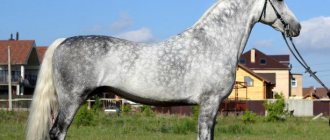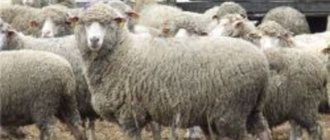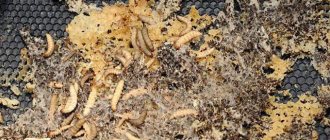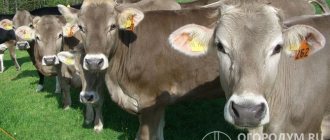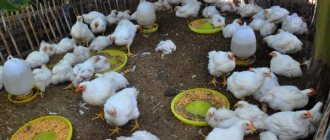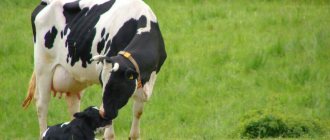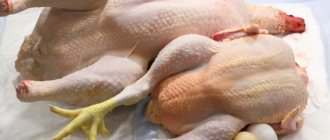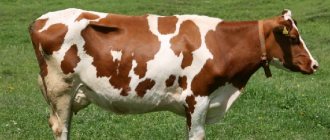Selection of meat breeds of chickens makes it possible to obtain strong crosses (hybrids) that are superior to the original individuals. One of the most productive examples is the Ross-308, which was developed by specialists from the British company Aviagen.
Ross 308 is a strong, fast-growing broiler with high meat performance.
The English hybrid is characterized by good survival, early ripening and unpretentiousness.
History of the breed
The official copyright holder for the production and sale of Ross-308 broilers is the Aviagen Group company. They have been breeding poultry for more than half a century, and have numerous reproductive branches in all parts of the world.
The company does not give away its secrets. However, it is known that the appearance of Ross-308 is the result of crossing the most highly productive breeds of chickens.
It is better to purchase hatching eggs and day-old chicks from an official distributor or from trusted farmers, this way you can be guaranteed to get the chosen breed and receive instructions on the specifics of care, and not become a victim of fraud.
Puberty
The speed of puberty is the most important for the egg-laying direction, because the sooner black whales begin to lay eggs, the faster their maintenance will pay off. But for the direction under consideration this is not the main thing.
Meat hybrids are valued because they quickly grow to a decent size. Most chicks go to slaughter long before they reach puberty, because by 2 months the growth rate is already about 2.5 kg. As for puberty, hens begin to lay eggs at 5.5-6 months.
Description and characteristics of the bird
In a nutshell, Ross-308 broilers can be described as one of the most productive and hardy hybrids. Poultry can be raised not only on industrial farms, but also in households.
Breeders were able to achieve some versatility in one breed - Ross-308 is declared primarily for meat production, but egg production indicators are also at a good average level.
What does it look like
The main distinguishing feature of Ross-308 is its massive paws; they immediately stand out in the appearance of day-old chicks. The cross also has the following features:
- the most massive part of the body is the chest;
- strong but short neck;
- dense white plumage without impurities;
- the beak is noticeably curved towards the bottom, and has a distinct yellow cornea;
- uniform cream skin color;
- bright red leaf-shaped comb, “earrings” are underdeveloped.
If a chicken shows a different color of feathers and skin, it is immediately discarded.
Character
The character of the Ross-308 breed can be briefly described as peace-loving phlegmatic people. Even young males do not get cocky in the poultry farm. But they have genes from fighting breeds of chickens. In a calm state, they can easily be found in the same pen with representatives of other breeds of birds. This is a valuable quality in agriculture.
But if the Ross-308 broiler is very angry, then the massive beak can cause serious damage.
Features of the diet of crosses
Feeding broilers also has its own characteristics related to the choice of feeding itself. The manufacturer recommends that bird owners do not use homemade mixtures from food waste, herbs, premixes, etc. Broilers are not picky about the choice of food, but if the goal of poultry farming is to increase the weight of chickens, it is necessary to purchase specialized feed. It is especially important to choose the right one in the first days of the chickens’ life.
The diet of young animals should change as the birds mature. It is best to use this scheme:
- In the first 4 days of life, give broilers pre-starter feed.
- From 5 to 10 days - starter food.
- From 11 days - growth.
- A few weeks before slaughter - the final one.
Those farmers who make their own mash should pay attention to the energy value of the products, as well as the need of broilers for large amounts of amino acids, as well as fats and carbohydrates. The main thing is not to exceed the caloric content of food. For such homemade feeding, ground grain is used, as well as sunflower and rapeseed flour. Broilers can get useful microelements from chalk, shells, salt, limestone, etc.
Experienced farmers do not recommend that novice poultry farmers prepare their own food for chickens. Incorrect selection of components and their proportions can negatively affect the health of birds and also reduce their weight gain. Human errors can make breeding crosses impractical.
Breed productivity
Chickens of the Ross-308 breed are distinguished by rapid growth and development of muscle mass. If all the nuances of keeping broilers are followed, they are ready for slaughter at the age of 45–50 days. At this age they reach high weights, and the meat is still juicy and tender. These are the main advantages for the meat industry.
Comparison with other meat chicken breeds
The table shows the average weights among the most common broiler meat breeds and their advantages. Among them, Ross-308 is distinguished by its fairly high productivity in weight gain.
| Breed | Weight, kg | Advantages of the breed | |
| Rooster | Chicken | ||
| Ross-308 | 5–6 | 4–4.5 | Precocity. On day 40, body weight reaches about 3.5 kg |
| Ross-708 | 5 | 4 | |
| Hubbard | 6–9 | 4–5 | High survival rate and not a strong dependence of weight on the amount of feed |
| Langshan | 4.5–5 | 3.4–3.8 | Unpretentious in care, with high immunity |
| Cobb-500 | 5–5.5 | 4–4.5 | They grow well in confined spaces. At 44 days the weight can reach about 3 kg |
| Brahma | 4–5 | 3–4.5 | Adapted to cold weather conditions |
| Koninkhin | 5–5.5 | 4–4.5 | Most often, broilers are bred for decorative purposes. Frost resistant |
| Rhode Island | 3–4 | 2.5–3 | Widely used in breeding for breeding new types of chickens |
| Corniche | 4–4.5 | 3–3.2 | Good stress resistance and egg production |
| Dorking | 4.5–5 | 3.5–4 | Chickens for professional farmers. Requiring care. Large palette of colors |
| Arbor Acres | 5–6 | 4–5 | Fast weight gain without the use of artificial stimulants |
| Faverolles | 4–5 | 2–3.5 | Year-round egg production. Cold resistance |
| Barbezier | 4.3–4.8 | 3.2–3.7 | The taste of meat is comparable to the taste of game |
| Orpington | 5 | 3.5–4 | Reduced tendency to gain fat mass |
| Jersey giant | 5–6 | 4–4.5 | High survival rate and good taste of meat and eggs |
| Plymouth Rock | 4–5 | 2.5–3.5 | Used by breeders to develop new breeds. High survival rate and egg production |
Egg production of laying hens Ross-308
Ross-308 broilers, when well maintained, are distinguished by high egg production, considering that this is still a meat breed. One hen produces from 190 to 210 eggs per year. It begins to lay eggs at 5 months of age.
The quality of eggs from Ross-308 is high, weight is about 60 grams. During the autumn molting period, egg production may decrease or temporarily stop. Fortified food will help speed up the renewal process.
Daily weight gain of chickens
Ross-308 chickens adapt well to the environment, which is reflected in high survival rate and rapid weight gain. The table shows the average daily weight gain:
| Day | Gain per day, g | Body weight, g |
| 0 | 0 | 42 |
| 1 | 14 | 56 |
| 2 | 15 | 72 |
| 3 | 18 | 89 |
| 4 | 20 | 109 |
| 5 | 23 | 132 |
| 6 | 25 | 157 |
| 7 | 28 | 185 |
| 8 | 31 | 217 |
| 9 | 35 | 251 |
| 10 | 38 | 289 |
| 11 | 41 | 330 |
| 12 | 44 | 375 |
| 13 | 48 | 422 |
| 14 | 51 | 473 |
| 15 | 54 | 527 |
| 16 | 57 | 585 |
| 17 | 60 | 645 |
| 18 | 63 | 709 |
| 19 | 66 | 775 |
| 20 | 69 | 844 |
| 21 | 72 | 916 |
| 22 | 74 | 990 |
| 23 | 77 | 1066 |
| 24 | 79 | 1145 |
| 25 | 81 | 1226 |
| 26 | 83 | 1309 |
| 27 | 85 | 1393 |
| 28 | 86 | 1479 |
| 29 | 88 | 1567 |
| 30 | 89 | 1656 |
| 31 | 90 | 1746 |
| 32 | 91 | 1836 |
| 33 | 92 | 1928 |
| 34 | 92 | 2020 |
| 35 | 93 | 2113 |
| 36 | 93 | 2207 |
| 37 | 94 | 2300 |
| 38 | 94 | 2394 |
| 39 | 94 | 2488 |
| 40 | 94 | 2581 |
| 41 | 94 | 2675 |
| 42 | 93 | 2768 |
| 43 | 93 | 2861 |
| 44 | 93 | 2954 |
| 45 | 92 | 3046 |
| 46 | 91 | 3137 |
| 47 | 91 | 3228 |
| 48 | 90 | 3318 |
| 49 | 89 | 3407 |
| 50 | 88 | 3495 |
| 51 | 87 | 3582 |
| 52 | 86 | 3669 |
| 53 | 85 | 3754 |
| 54 | 84 | 3838 |
| 55 | 83 | 3920 |
| 56 | 81 | 4002 |
| 57 | 80 | 4082 |
| 58 | 79 | 4160 |
| 59 | 77 | 4238 |
| 60 | 76 | 4313 |
| 61 | 74 | 4388 |
| 62 | 73 | 4460 |
| 63 | 71 | 4531 |
| 64 | 69 | 4600 |
| 65 | 67 | 4668 |
| 66 | 66 | 4733 |
| 67 | 64 | 4797 |
| 68 | 62 | 4859 |
| 69 | 60 | 4919 |
| 70 | 58 | 4978 |
Growing Ross-308 chickens for longer than 2.5 months is not economically profitable. Weight is growing more slowly, and food is being consumed more actively. In addition, the gained mass begins to be partially deposited in fat.
Chick weight gain by day
Ross chicken weight table by day
| Day | Average live weight of chicken, g | Average weight gain per day, g | Average weight gain per day of the week, g | Feed consumption per day |
| 0 | 42 | – | – | – |
| 1 | 56 | 14 | 13 | |
| 3 | 89 | 16,5 | 20 | |
| 5 | 132 | 21,5 | 27 | |
| 7 | 185 | 26,5 | 20,48 | 35 |
| 10 | 289 | 34,7 | – | 48 |
| 14 | 473 | 46 | 41,12 | 69 |
| 21 | 916 | 63,3 | 63,19 | 110 |
| 25 | 1226 | 77,5 | – | 134 |
| 28 | 1479 | 84,3 | 80,55 | 152 |
| 35 | 2113 | 90,57 | 187 | |
| 42 | 2768 | 93,57 | 215 | |
| 49 | 3407 | 91,22 | 233 | |
| 56 | 4002 | 84,96 | 243 | |
| 63 | 4531 | 75,84 | 244 | |
| 70 | 4978 | 63,8 | 234 | |
The share of gutted carcass in live weight is 70-74%. With a weight of 3 kg, the drumsticks make up about 10% of the weight, the thighs - 13%, the breast - 22%.
Pros and cons of the breed
Over the entire period of its existence, Ross-308 broilers have established themselves as one of the best breeds of chickens for farming.
The cross has many advantages, but the Ross-308 has almost no disadvantages. Only a couple of nuances can be highlighted.
Advantages and disadvantages
rapid weight gain. At 1.5 months the bird can be sent for slaughter;
early puberty. Young chickens begin to lay eggs at 5 months;
high egg production;
Female broilers have a well-developed maternal instinct. They can hatch other people's eggs;
calm temperament;
high taste and quality indicators of meat products;
high survival rate of chicks and young individuals - 98%.
Poultry meat becomes tougher after 1.5–2 months of life;
For the proper development of chickens, it is necessary to control the amount of feed, its composition and the ratio of BPJU.
But the whitish color of the skin of the carcass is difficult to categorically attribute to the pros or cons of the breed, it depends on the preferences of the consumer
Why is this broiler so valuable?
The process of spreading broiler chickens has brought two undeniable factors into our lives:
- Just an unrealistically large amount of meat;
- Egg production of amazing sizes.
When raising broiler (cross) breeds, you need to focus on the following rules:
- If you raise a meat breed, you get it from chickens 150-180 days old;
- If an egg-laying variety is used, then the same periods apply; egg production begins on day 150-180;
- In the case of using the meat-egg direction, old chickens are slaughtered for meat, and young chickens after 150-180 days are used to produce egg products.
In this case, we have a third universal option. Which takes this cross to another level.
Specifics of poultry keeping conditions
Ross-308 chickens tolerate hot and cold climates well. But for high productivity and further economic benefits, you need to take into account some requirements for keeping poultry. It is not recommended to ignore the vaccination procedure and sanitary and hygienic standards for the habitat of chickens.
Basic principles of poultry house microclimate
For day-old chicks and young animals up to 1 month of life, it is important to create a comfortable microclimate. This directly affects the health of the bird and, accordingly, survival.
- Temperature conditions. From birth to 10 days in the brooder +32°C. Until the age of 30 days, the temperature should not exceed 30–32°C. After a month, the temperature in the chicken coop is reduced daily by 1°C; upon reaching 20°C, this indicator is left on a permanent basis.
- Air humidity level in the room. Up to 10 days – not lower than 65%. After 2 weeks of life - not lower than 55%.
- Lighting in the chicken coop. From birth, chicks are only allowed to turn off the lights for 1 hour every 22 hours. Gradually, lighting time is reduced to 13 hours a day.
Features of bird care
When raising livestock of the Ross-308 cross, it is necessary to ensure regular ventilation without drafts and enrichment of the room with oxygen. Fast growing broilers produce a lot of carbon dioxide and steam when they breathe.
It is also important to regularly monitor the cleanliness of bedding and feeders. Only fresh food and water should always be available.
Contents on litter
For the purpose of obtaining high quality meat from Ross-308 broilers, the best option is their floor rearing. Although there are many nuances that need to be taken into account to maintain room hygiene.
The floor mat should be regularly updated and remain loose and dry. The ideal option to use for these purposes is pine sawdust, sunflower husks and sphagnum peat.
Their advantages are their ability to retain and mask the smell of hydrogen sulfide and ammonia, as well as greater hygroscopicity.
The thickness of the scattered litter should be at least 8–10 cm.
Growing on mesh floors
The mesh floor is installed on top of the pallets. In terms of cleanliness, this is convenient, because droppings accumulate in trays and the chickens do not touch them. Birds are usually raised under such conditions in large poultry farms.
Caring for caged birds
The cells of the cages should be small in size so that the chicks and young animals cannot stick their limbs into them.
Advantages of cellular content:
- Space saving. Cages can be stacked on top of each other.
- Productive weight gain by chickens is achieved by limiting active movements of the bird.
At first, the bottom of the chicken cages is lined with paper so that the paws get used to the floor topography.
Recommendations from one of the breeders on keeping broilers - Handbook on keeping (pdf).
Why do you need to control weight gain?
Controlling weight gain is an important condition for obtaining profit from the spent feed. The bird must undergo a course of daily weight gain. Day-old chicks weigh 40-50 g. This figure increases every day. Broiler chickens type ROSS 308 should have the following growth rate:
- 1 week - weight gain of 20.9 g per day;
- 2 week - 40.7 g;
- 3 week - 64.1 g each;
- 4 week - 80.7 g each;
- 5 week - 90 g;
- Week 6 - 94 g each
Starting from week 7, the average daily weight gain does not increase, and may even decrease to 75 g. Cross is able to gain up to 5 kg in just 10 weeks. But the real numbers are more modest. Household conditions, the quality and mode of feeding, as well as the characteristics of care affect the weight of chickens by 2.5-3 months. Broilers most often weigh between 3-4 kg.
Broiler chickens ROSS 308 are actively growing. Monitoring your weight every day is difficult and inconvenient. In addition, chickens and roosters of this breed have different rates of weight gain, so it is more advisable to monitor weight gain week by week. Beginner poultry farmers will be helped by the ROSS weight table declared by the manufacturer.
| Age, weeks | Chicken weight, grams | Rooster weight, grams |
| 2 | 472 | 487 |
| 3 | 900 | 950 |
| 4 | 1425 | 1560 |
| 5 | 2005 | 2280 |
| 6 | 2590 | 3020 |
| 7 | 3160 | 3700 |
| 8 | 3690 | 4400 |
The weekly average weight table is intended for monitoring and timely culling of birds on the farm. Provided that each ROSS receives high-quality feed, and the conditions for its maintenance are observed by farmers, the chickens reach a weight of 5 kg in 10 weeks. Such figures indicate the high profitability of maintaining the breed for production purposes.
Features of feeding the breed
Ross-308 broilers actively gain weight and develop with proper balanced feeding. This is especially important in the first 10 days after birth.
If mistakes are made in feeding chickens, this will directly affect further weight indicators and the health of the young.
Fresh water must be available at all times. When choosing a feeder, it is important to consider the height of the sides so that chickens do not trample or overturn it. Also in size it must accommodate the daily volume of food for the entire poultry population.
Diet for chickens
The diet of Ross-308 chickens must be diversified gradually in order to prepare the gastrointestinal tract.
Basic moments:
- from birth to 5 days. Chickens are given very finely ground millet and oatmeal, and boiled eggs are also offered;
- from 3–5 days you can introduce a small amount of sprouted barley grains, finely chopped greens and low-fat cottage cheese into the menu;
- on the 10th day, the diet is replenished with boiled vegetables - carrots and potatoes;
- after 2 weeks, the transfer of young animals to mixed feed begins.
In addition to all this, it is necessary to add industrially produced vitamin and mineral supplements to food or in the form of meat and bone meal, fish oil, chalk and egg shells, and food waste.
Video 1: ROSS 308 nutrition from the first days
What to feed Ross 308 broiler chickens from the first days without the use of concentrates.
Video 2: Ross 308 daily allowance, content, diet
What to feed 308 broilers from age zero.
Diet for adults
Adult meat broilers need to be fed 3 times a day. One chicken needs 150 grams of feed per day. In the morning they prefer wet mash, and in the evening dry grain.
Industrial feed is already balanced in composition and ready for use, but you can make the mixture yourself at home.
The diet should contain a lot of protein, this promotes muscle growth. When choosing grain crops, it is better to focus on wheat, corn and oats.
Wet mashes can be made not only with water, but also with bone broth. Add vitamin and mineral supplements only to warm formulations. At high temperatures, most of them are destroyed.
Recommendations from one broiler manufacturer for feeding poultry - Feed ration specifications (pdf).
Advantages and disadvantages of a hybrid
The main advantage of Ross 308 broiler chickens is their high meat productivity and excellent taste of the product. In addition, birds can be kept in cages, which saves space. According to farmers, the hybrid has the following disadvantages:
- weak immunity;
- demands on the food supply;
- broilers cannot be bred at home - after using one batch of chickens, you will have to purchase new young animals or eggs for incubation.
Broiler breeding Ross-308
Broilers of the Ross-308 breed are the most popular for breeding and rearing among farmers. To obtain a new poultry population, it is necessary to purchase hatching eggs from trusted companies with a certificate of conformity.
It is not advisable to independently collect eggs from a cross to hatch chickens, since such offspring may not retain all the valuable qualities of the parent breed.
Egg incubation
Eggs of the same production date are selected for placement in the incubator in order to obtain a brood at the same time. The longer the storage period of hatching eggs, the lower the hatchability rate.
| Number of days | Hatchability percentage |
| 5 | 91.5 |
| 10 | 82.5 |
| 15 | 70.2 |
| 20 | 23.4 |
| 25 | 14 |
It is better to use eggs that have been stored for no more than one week. The main countries supplying incubation material are Germany, Poland and Holland.
Preparing the incubator
If the temperature and humidity conditions in the incubator are disturbed, then at birth the Ross-308 broiler chick may be weak and develop worse. Therefore, you should rotate the eggs from the center to the edge on a daily basis to ensure even heating.
The table clearly shows the requirements for conditions in the incubator for the normal development of chickens in eggs.
| Period | Period of time | Humidity, % | Temperature, °C | Number of turns per day | Egg cooling |
| 1 | 1–7 days | 50 – 55 | 37.8 | 4 | No |
| 2 | 8–14 days | 45 | 37.8 | 4–6 | No |
| 3 | 15–18 days | 50 | 37.8 | 4–6 | 15–20 minutes 2 times a day |
| 4 | 19–21 days | 65 | 37.5 | No | No |
Sorting eggs
The eggs must be specially marked “Ross-308” and their production date. They must be the same size and shape, without damage. Any damage or defects on the shell are not acceptable. Eggs that are too small or, conversely, too large are also not used for incubation.
To check a fertilized egg, a transillumination lamp is used. There should be a noticeable dark spot in the center. On average, its weight should be 60 grams. The larger the mass, the longer the incubation time takes.
Incubation periods
The entire incubation period for Ross-308 broilers is 21 days. The table shows all stages of embryo development from the embryo to the birth of the chick:
| Incubation day | Embryo development |
| 1 | The blastoderm stage at the germinal disc. A noticeable segmentation area is formed |
| 2 | Formation of the yolk membrane for future nutrition of the embryo |
| 3 | Embryo formation on the left side of the egg. The rudiments of the torso, head and brain can be traced |
| 4 | The amniotic cavity is formed. It protects the embryo and promotes metabolism |
| 5 | The embryo is in the shape of the letter C. The toes are separated |
| 6 | Growth of the yolk membrane and development of the lower limbs |
| 7 | Formation of the neck, brain size and beak |
| 8 | Formation of the auditory canal. Legs and wings are clearly visible |
| 9 | Claws are formed and blood supply increases |
| 10 | Development of eyelids, feather follicles and nostrils |
| 11 | Development of the eyeball. The embryo looks like a chicken |
| 12 | Growth of feather follicles in the head area |
| 13 | Claws and scales on the paws are fully formed |
| 14 | Covering the body with down |
| 15 | Active fetal growth. Egg white actually disappears |
| 16 | The head takes place at the right wing |
| 17 | The beak faces the air chamber of the egg. Kidneys produce urine |
| 18 | The size of the yolk and amniotic fluid decreases |
| 19 | The beak faces the inner shell of the egg and is ready for pecking. |
| 20 | The chicken pecks the egg shell from the inside. Gas exchange occurs due to the porous structure of the shell |
| 21 | Using its legs and wings, the chick helps itself to pierce the shell. |
Hatching and caring for chicks
Broiler chickens of the Ross-308 breed are completely freed from eggshells within 13–18 hours. Immediately at the time of birth they are wet, but after drying they fluff up. Now they need round-the-clock lighting and heating.
Infrared lamps are best for lighting, and incandescent lamps and heating pads are best for creating heat. Large poultry farms use special heated rooms for newborn chicks and young animals.
The first feeding of chickens is carried out no earlier than 10–16 hours after hatching from the egg.
Incubation mode
You need to buy hatching eggs very carefully, carefully choosing the same size, without defects or damage, and they must also have the correct shape. In addition, the eggs must have the “ROSS-308” seal on them, and the seller must have a certificate of authenticity of the incubation material. After the eggs are purchased, they will need to be heated naturally, and the air temperature should be warmed up to 25 degrees.
Did you know? Broiler incubation material ROSS-308 has a fairly low price, acceptable even for the most economical farmers. It is considered one of the cheapest materials among all meat breeds.
This is followed by the hatching mode, which is the same as for ordinary chickens. The temperature for eggs in the incubator is set at 38 degrees Celsius. The first seven days it should be 37.9 °C, after which it decreases by a degree and remains at this level for the next week. Already on the 18th day, the temperature is lowered to 36.5 ° C, and by the very conclusion - 36.2 degrees Celsius.
During the incubation period, experienced breeders advise setting a high humidity regime for ROSS-308 birds, which is recommended to be maintained at a level of at least 80% until hatching. This is done to ensure that the shell does not dry out or become too hard, otherwise the chickens will not be able to hatch on their own.
Main diseases of birds and their treatment
Young individuals are most susceptible to diseases. To protect them and identify illnesses in time, it is important to know the main symptoms of the most common diseases in chickens.
Ross-308 broilers are prone to the following diseases:
| Disease | Symptoms | Treatment |
| Mycoplasmosis | Lethargy | Drugs: Enrofloxacin, Tylosin, Tiamulin |
| Swelling of the eyelids | ||
| Fragrance | ||
| Wheezing | ||
| Bronchopneumonia | Lethargy | Broad-spectrum antibiotics |
| Lack of appetite | ||
| Wheezing | ||
| Nasal discharge | ||
| Salmonellosis | Diarrhea | Streptomycin, Furazolidone |
| Drowsiness | ||
| Weakness | ||
| Edema of the lower extremities | ||
| Inflammation of the eyelids and cloaca | ||
| Newcastle disease | Severe fever | There is no treatment. Most often fatal |
| Weakness and lethargy | ||
| Lack of appetite | ||
| Impaired coordination of movements | ||
| Bloody issues | ||
| Conjunctivitis | ||
| Marek's disease | Paralysis of various parts of the body | Not subject to treatment |
| Bird flu | Increased body temperature | There is no treatment. The mild form goes away on its own |
| Loss of coordination | ||
| Lethargy | ||
| Coccidiosis. Parasitic disease | Weight loss | Preparations: Decox, Statil, Coccidin, Baycox |
| Lethargy | ||
| Diarrhea | ||
| Chicken typhus | Blueness on the scallop | Broad-spectrum antibiotics |
| High body temperature | ||
| White or green diarrhea | ||
| Chicken pox | Conjunctivitis with purulent discharge | There is no treatment |
| Lethargy | ||
| The appearance of pockmarks | ||
| Lethargy |
What else you should know
Anyone who has decided to have broilers should also know that errors in feeding can cause signs of certain diseases in birds. Thus, a small amount of grain mixture and an increase in the volume of green feed can lead to chickens starting to fall on their feet, so you should monitor the quality of feeding.
Reviews from poultry professionals and general characteristics will also be useful for beginners. Some livestock owners refuse to treat birds infected with infectious diseases. They are discarded; raising such individuals is unprofitable. This allows you to save money, as well as protect the remaining chickens and the future egg from an infectious individual.
Disease Prevention
Although Ross-308 broilers are considered quite resistant to diseases, prevention is still necessary. It is better to prevent than to lose most of the chicken population in the event of an epidemic.
Methods for preventing diseases:
- regular examination of all juveniles and adults;
- isolation of sick and suspicious birds;
- enrichment of feed with vitamin and mineral supplements in accordance with the age of the chickens.
You can also add decoctions of chamomile and hawthorn to the water. Periodically solder the young animals with a weak solution of potassium permanganate.
Character
Almost all varieties that are broiler-oriented have fighting roots. But, it should be noted that during the selection process they were subjected to tests that deprived them of the qualities typical of fighters - aggression and quarrelsomeness.
Therefore, both the adult flock and the young, calm and peaceful, do not attack their relatives in vain and can get along quite well with other birds in the walking yard.
In addition, they are able to get used to any living conditions, and can even be kept in cages, but this is not recommended by experts, since a sedentary lifestyle negatively affects the taste of meat.
Variety Cobb 500
a brief description of
To find out what is the difference between the Cobb 500 and Ross 308 broiler, first let’s look at the first variety. Detailed information is presented in the article: “Description of the Cobb 500 broiler breed.” Next, we will only touch on important points that will help us determine the difference between the described broilers.
Cobbs 500 have yellowish skin, white feathers and a scarlet crest. The carcass and legs of the chickens are massive. The birds are not aggressive and do not start fights, however, under poor living conditions, cannibalism (pecking) is possible.
The survival rate of chickens does not fall below 95%. Already in the first month they weigh more than 2 kilograms, and in the second - at least 3 kilograms. This time is best for slaughter.
Chickens of this species lay eggs from 7 months, but one bird produces only about 3 eggs per week. But their meat has high taste characteristics and is ideal for a diet menu.
Ailments, disadvantages and advantages
If kept incorrectly, diseases cannot be ruled out. Most often, Cobb 500 chickens suffer from salmonellosis, enteritis, vitamin deficiency, Marek's disease, bronchopneumonia, and dyspepsia.
The disadvantages of Cobb 500 include intolerance to cold, so in cold regions you will have to regularly heat the chicken coop.
Among the advantages: high survival rate, low food costs and rapid gain of meat mass. The cost of a chicken is about 45 rubles per piece.
Content
In order for Cobb 500 chicks to gain weight well, from the first days they must be in a warm and lighted chicken coop. The young require intensive feeding, and in the dark the chicks will not approach the feeders. Therefore, you can turn off the lights at night only from 2 weeks of life. From this time on, there should be light in the chicken coop for about 18 hours a day.
The room must be equipped with ventilation, but avoid drafts and maintain the temperature at 27 degrees Celsius. The chicken coop is cleaned regularly, and before moving in the young, the bedding is completely changed, feeders with drinkers, and perches with nests are washed and disinfected.
Feeding
For accelerated growth, it is important to provide Cobb 500 with the correct diet. Compound feed PK-5 is best suited, but you can also prepare feed yourself.
Chickens are given porridge, grain mixed with meat and fish waste, crushed chalk, herbs, and eggshells are always added. The menu also includes curd mass and chopped egg white.
Properly organized living conditions and a balanced diet are the basis for raising hybrid chickens.
Characteristics of Ross 708
General description of the hybrid
Chickens have developed muscles, snow-white feathers and large paws. If you exclude free range and keep the birds in a cage, they will behave calmly and phlegmatically.
The description of Ross 708 broilers also includes weight characteristics. They quickly gain weight and already weigh about 3 kilograms a month.
Laying hens have a high egg production - about 150 eggs per year. Therefore, some of the young animals are slaughtered for meat, and the remaining chicks are raised for eggs. The Ross 708 carcass is easy to distinguish from the products of other hybrids due to the color of the skin. It is pale, not deep yellow.
Advantages and disadvantages
Chicks of this variety are similar to Cobb 500, so it is recommended to purchase them only from trusted breeders to avoid mistakes. The cost of a chicken is about 60 rubles.
The advantages of the hybrid are a combination of meat and egg productivity, several possible housing options and high immunity. Chickens easily tolerate poor living conditions and rarely get sick.
The disadvantages of Ross 708 include the need to provide chickens with a balanced diet, as well as the high costs of heating and lighting the chicken coop.
Living conditions of the hybrid
Ross 708 chickens are kept in a regularly ventilated, dry and clean poultry house. Once every 2 months, the premises and feeders are disinfected to reduce the risk of infectious diseases and prevent the death of livestock.
A thick layer of wood sawdust or dry grass bedding must be placed on the floor, and nets are installed over the ventilation holes.
In order for Ross 708 chickens to gain weight well, the room temperature must be maintained at 28 degrees. In a cold barn, birds will not eat well and become sick.
Chickens of this variety, characterized by high egg production, require a lot of light, so additional lighting will have to be installed in the chicken coop.
For the first 1.5 weeks of life, young animals are kept in a cage to make it easier to control their condition and the amount of food consumed. Then the chicks are moved to the chicken coop, because they become cramped in the limited space.
Free-range chickens Ross 708 are not practiced, otherwise the young animals will not gain the required weight.
Organizing a proper diet
Ross 708 needs dry and wet food in unlimited quantities. If farmers create their own menu, they add purchased vitamins and minerals to the feed. However, it is recommended to buy ready-made feed to avoid mistakes in the diet.
There should always be clean, fresh water in drinking bowls, but not raw water from the tap. Children are given chamomile or rosehip infusions.
Up to 10 days of life, chickens eat only crushed food. Oat porridge, cottage cheese, grated egg are suitable. Then fish and meat waste, boiled chopped vegetables: beets, potatoes are added to the menu.
Children are offered mash - a mixture of root vegetables, crushed grain, and fish waste. At 3 weeks, mixed feed and greens are gradually introduced into the diet. Organizing food for babies is not easy, so experienced breeders buy ten-day-old chickens.


